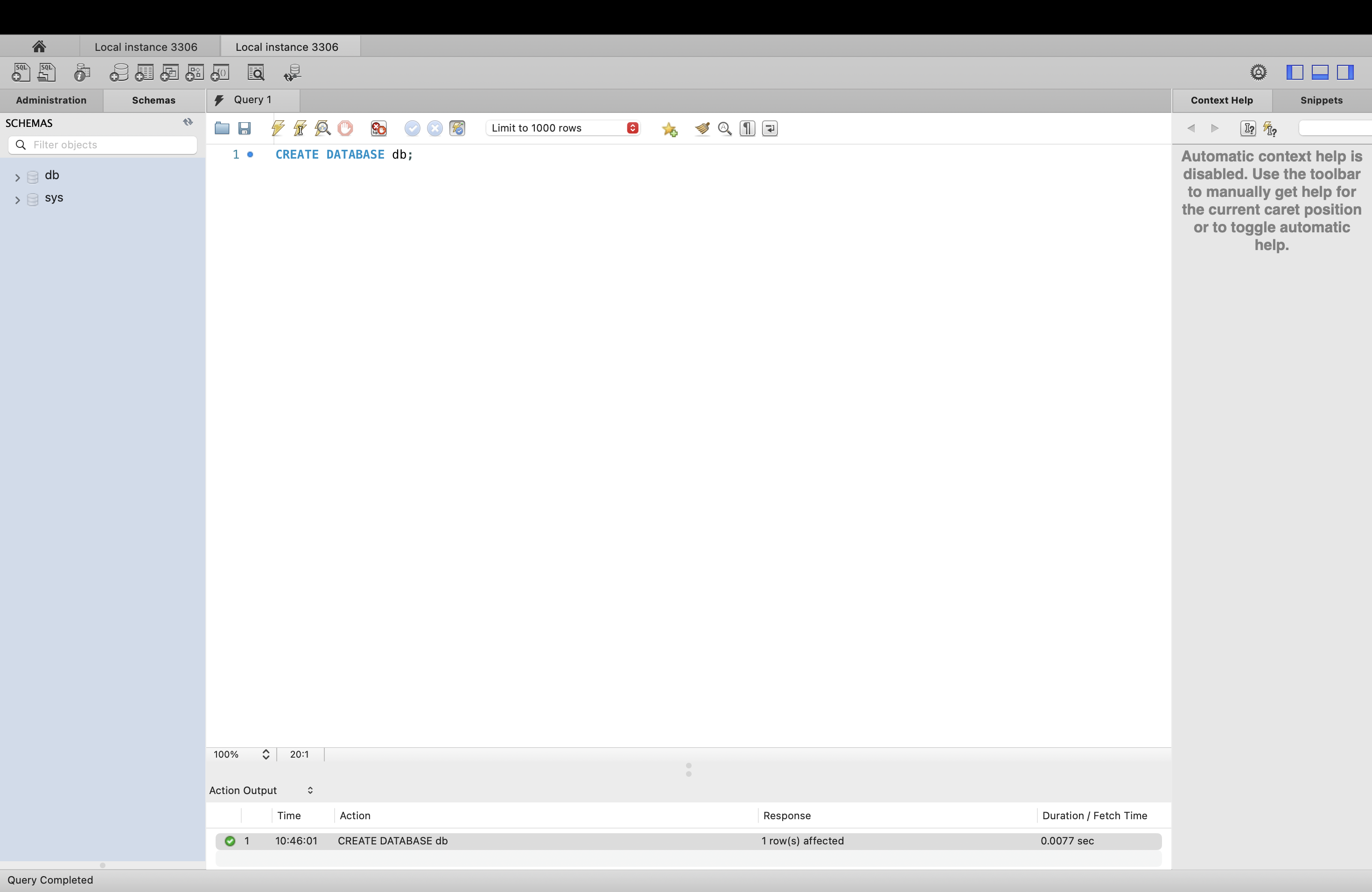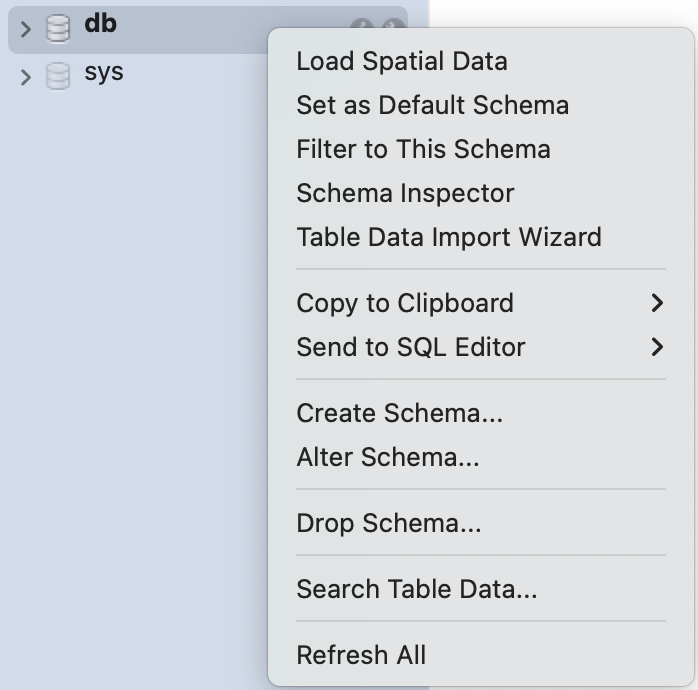Databases#
You can think of a database as a folder. It acts as a container. Tables would be the files within the database (folder).
Creating a Database:
Step 1: In your query editor, write the query (replace *_* with your db name)
CREATE DATABASE your_database_name;
When you make MySQL queries, there is no case sensitivity so you don’t need to worry about capitalization of anything. A good format to follow, however, is using uppercase for keywords like CREATE DATABASE or SELECT (clause that you will learn soon)
Step 2: Click on the lightning bolt button (#5 in the legend from earlier) to execute the statement
You will see in your output (7) that the action was successful (green check)
Step 3: Select the Schemas tab (4) and hit the refresh button beside where it says schemas. You should now see your new database.

Use the database:
There are two ways:
Method 1: Right click on the database and click on ‘Set as Default Schema’

Method 2: In your query editor, write the query (replace *_* with your db name)
USE your_database_name;
Drop the database:
Step 1: In your query editor, write the query (replace *_* with your db name)
DROP DATABASE your_database_name;
Step 2: Click on the lightning bolt button (#5 in the legend from earlier) to execute the statement
You will see in your output (7) that the action was successful (green check)
Step 3: Select the Schemas tab (4) and hit the refresh button beside where it says schemas. You should not see your database now.
Exercise 1
Make a new tab. Create a database and use it. Save this script into a folder for the work you’ll do in this handbook.
